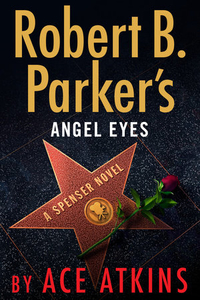Return to the Enchanted Island by Johary Ravaloson
 Wednesday, November 27, 2019 at 5:14AM
Wednesday, November 27, 2019 at 5:14AM 
Published in France in 2012; published in translation by Amazon Crossing on November 5, 2019
“Love, more often than anything else, ends. The thing that makes it seem to us to transcend all else is that when it dies, those who had it in their lives become like dead men.” Those accurately depressing words are spoken out of the blue, and to his wife’s dismay, by Ietsy Razak, the main character in Return to the Enchanted Island. The title sounds like the reboot of a bad television show, but Enchanted Island is the name given to Madagascar in a 2005 documentary.
Ietsy Razak lives in the family home (Anosisoa) on the Enchanted Island with Lea-Nour, his wife of fifteen years, and their children. Ietsy enjoys a life of ancestral privilege. His antics as a child caused his transfer from the local Jesuit school to a boarding school in France run by Benedictine monks. His aunt and uncle live in Paris, and from them he learned about his absent mother. For the most part, Iestsy chases girls and bombs out of school, becoming “an illegal immigrant through sheer indifference,” while explaining to his friends that “doing nothing, for him, was a philosophical project.”
The novel includes an origin myth, explaining that the original Ietsy fell to earth and, alone on the enchanted island, created statutes for company. Breath took pity and breathed life into the statutes but took the breath away from some of them to punish Ietsy for a sexual transgression. The living statutes became known as the Vazimbas, who are now considered the earliest inhabitants of the mountains of central Madagascar. The origin myth evolves into the story of The-Lord-Who-Never-Gets-Wet and his search for a sacred lake made from tears, leading to the Vazimba migration.
I enjoyed the origin myth and at least some of the story in France. After Ietsy returns to Madagascar, the story is uneventful. Ietsy spends most of his time taking note of how privileged he is in comparison to most of his fellow citizens, while reminiscing about or adding to his varied sexual conquests. He often states, perhaps with ironic intent, that he is “blessed by the Gods and Ancestors,” but he seems to regard the blessing as entitlement. We learn how Ietsy rediscovers and marries Lea-Nour but the relationship is dull.
Apart from the origin myth, Return to the Enchanted Island tells us surprisingly little about Madagascar. We learn that the “cultured Malagasy elite had readily given up their mother tongue,” particularly when they are in the presence of foreigners so as not to give offense. We learn that the elite work hard to perpetuate their elite status, but that’s true everywhere. We learn very little about the non-elite. We hear that Ietsy has returned to the “City of a Thousand Circumstances” and the “City of a Thousand Lovers” and the “City of a Thousand Rites” and several similarly glib descriptions, yet we learn little of the city itself.
So while the story provides insight into Madagascar’s oral traditions and the role of Vasimbas in modern life, it does little to paint a picture of contemporary Madagascar. Perhaps that’s because Johary Ravaloson lives in France, which is the novel’s primary focus. Ravaloson can write about anything he pleases, but the title implies that Ietsy’s return to his native land might change him in some way, or that he might change Madagascar. If he comes of age in Madagascar by finding his place in the world, as blurbs suggest, I didn’t notice.
Ietsy’s time in France, viewed as a portrait of a wasted life, is more interesting. Ietsy’s efforts to avoid ID checkpoints that are the bane of illegal immigrants give the story some dramatic meat. Competing perspectives on love, including a French lover’s contention that “love that was based on trust should not be confined within a couple, but should instead allow each individual to blossom and give the other person strength to explore the world and life,” add a splash of pop philosophy to the narrative. The portions of the novel that address Ietsy’s return to Madagascar, however, are too problematic to make the book a success.
RECOMMENDED WITH RESERVATIONS



